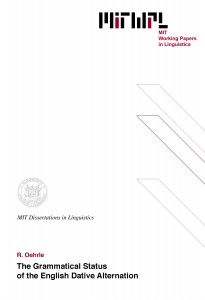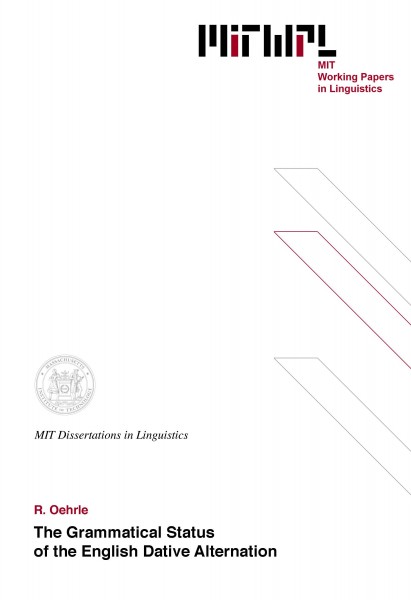The Grammatical Status of the English Dative Alternation
R. Oehrle, 1976
This thesis is concerned with the syntactic alternation between structures of the form X-Vi-NPj-NPk-Y and structures of the form X-Vi-NPk-P-NPj-Y (where "P" is either "to" or "for"). Two theories of this alternation are considered: on one theory, in cases where the alternation is applicable, one of these structures is base-generated and the other is derived by means of transformation; on the other theory, both structures are base-generated and the relation between them is characterized by means of a lexical redundancy rule which reduces the independent information content of the lexicon (along lines proposed by Jackendoff). The thesis is divided into three parts. In Part One, on the basis of a detailed semantic analysis of sentences which conform to one or the other of these structures, the following conclusions are reached: first, that independent of the alternation in question, both structures are generated by the phrase-structure rules of the base; second, that there are semantic restrictions on the alternation; third, that semantic interpretation is not always invariant under the alternation; fourth, that semantic considerations along cannot provide sufficient conditions for the applicability of the alternation. In Part Two, syntactic considerations which bear on the choice between these two hypotheses are discussed. The main conclusion of this part is that with respect to syntactic operations, there is no evidence that favors a distinction between base-generated instance of the double object construction and transformationally-derived instances of the double object construction. In Part Three, a variety of arguments are presented which favor the theory based on a lexical redundancy rule over a transformational theory.
Thesis supervisor: Morris Halle
Title: Professor of Linguistics
Table of Contents
Introduction 7
Part I Semantic aspects of the dative constructions
0. 14
1. 19
2. 31
3. 44
4. 67
5. 92
6. 106
7. 139
Footnotes 146
Part II Syntactic aspects of the dative constructions
0. 164
1. 166
2. 174
3. 188
4. 236
5. 246
Appendix 250
Footnotes 256
Part III The status of the English dative alternation
0. 269
1. 269
2. 271
3. 272
4. 274
5. 282
Footnotes 284

